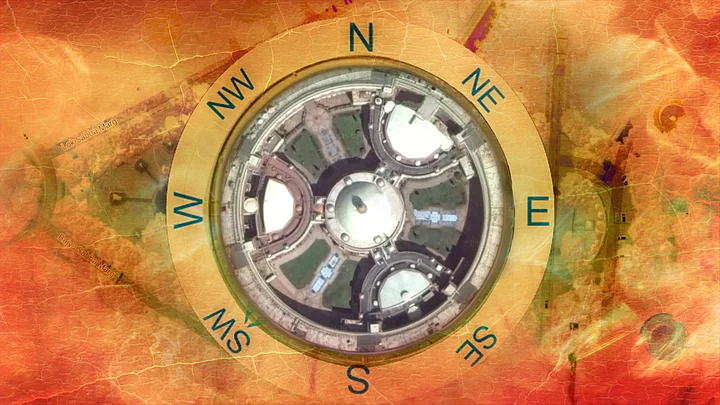Last Sunday, Lok Sabha Speaker, Sumitra Mahajan mooted a proposal for construction of a new parliament building on the ground that the existing 88-year-old structure is “showing signs of distress” and that it will not be able to meet the growing demand for space.
There is no doubt that the Parliament is in urgent need of repair and renovation, but is there an unstated “vaastu” and “feng shui” angle to Mahajan’s anxiety? Mahajan may not have been explicit, but she may have been moved by the so-called ancient Hindu dwelling science, according to which the troubled history of a building can be cured if the resident demons are driven away.
The Speaker’s proposal is not new. As far back as October 2002, when Atal Behari Vajpayee was the Prime Minister, the then Speaker, Manohar Joshi, initiated a move to have a new building constructed on the ground that the existing one suffered from “vaastu dosha” (flaws of the elements).
The Devil Is In The Detail
- Speaker Sumitra Mahajan’s proposal to construct a new parliament building may have a bad vaastu angle
- Efforts in the past to have a new parliament building did not take-off
- In October 2002, the then Speaker Manohar Joshi hired the services of a vaastu expert who found serious flaws
- According to vaastu expert, the very circularity of the building was at the centre of the building’s bad vaastu
- Some non-BJP parties have junked Mahajan’s proposal on the ground that a heritage structure cannot be destroyed
History of Negativity
Joshi’s angst was spurred by the untimely death of 13 sitting MPs, including the then Speaker GM Balayogi in a helicopter crash, and the terrorist attack (during the life of the 13th Lok Sabha).
He invited vaastu expert Ashwinie Kumar Bansal to study the flaws, if any, and suggest remedies. Bansal visited the Parliament House twice, found “serious flaws” and submitted a 10-page report to the Speaker.
In his report, Bansal claimed, inter alia, that the “string of tragedies, friction inside the House between members and political parties and the inability of the political leadership to make the right decisions to take the country forward, are the results of negative energy emanating from the building.”
Fault in Circularity?
Author of several books on Feng Shui and Vaastu, Bansal said that he studied the buildings that house legislatures in the US, UK, Pakistan, Russia and Germany. But the trouble with the Indian Parliament House “begins from its circular shape itself, which is good for a stadium but not for a legislature. The Gandhi statue erected in 1993 aggravated the bad effects” and he suggested barricading the area around it and put up water fountains to absorb the negative energy.
Conceptualised by Herbert Baker, the massive circular structure, situated on the northwest of Vijay Chowk, is 173 metres in diameter and covers 2.02 hectares in area, with colonnaded verandas enclosing the entire circumference. The three semi-circular areas were designed for the Chamber of Princes, the Council of State and the Legislative Assembly.
The building comprises three semi-circular chambers for the legislatures and a central library crowned by a 27.4-metre high dome. A verandah with 144 columns surrounds the three chambers of the Lok Sabha, the Rajya Sabha and the library.
Seat of Trouble
Bansal also faulted the sitting arrangement inside the House saying that “the Lok Sabha chamber is shaped like a ‘D’, which is not good in vaastu. The PM sits in the northwest, the zone of air and air has the quality of movement which creates pressure.” The PM should sit in the middle, he said. The Speaker’s chair is right under the press gallery and that is why the presiding officer is unable to control the members, he claimed.
Apparently, the confidential vaastu report was junked after the veteran Marxist Somnath Chatterjee became the Speaker in 2004. Meira Kumar, who was anointed Speaker in 2009, revived the proposal, not on vaastu ground but over the issue of “safety”.
Concerned over the wear and tear of the heritage building, Kumar constituted a parliamentary committee comprising leaders of various parties and domain experts to examine proposals for renovation, alteration and modification of the ageing complex. Subsequently, she said she will hold consultations with the vice president on the advisability of constructing a new complex.
The move did not make much headway with some left and left-of-centre MPs questioning the move that would entail enormous cost to the national exchequer. Then Parliamentary Affairs Minister Pawan Kumar Bansal too opposed the proposal.
While many political leaders were guarded in their response to Mahajan’s new proposal, JD(U) chief Sharad Yadav on Monday went public, strongly opposing the move. “I do not think that any country in the world has destroyed its historical buildings. I am surprised that there is a suggestion to change the building,” Yadav said, adding that an additional structure can be constructed to address the space problem.
The vaastu expert had also suggested that instead of constructing a new building and wasting money, Parliament Annexe or even Vigyan Bhavan, both vaastu friendly, could be converted into the parliament.
If there is political consensus on the issue, Parliament House, a Grade I heritage structure, whose foundation was laid by the Duke of Connaught in 1921, designed by Edwin Lutyens and Herbert Baker and inaugurated by Lord and Lady Irwin in 1927, could end up as a museum piece a few years from now.
(The writer is a Delhi-based senior journalist)
